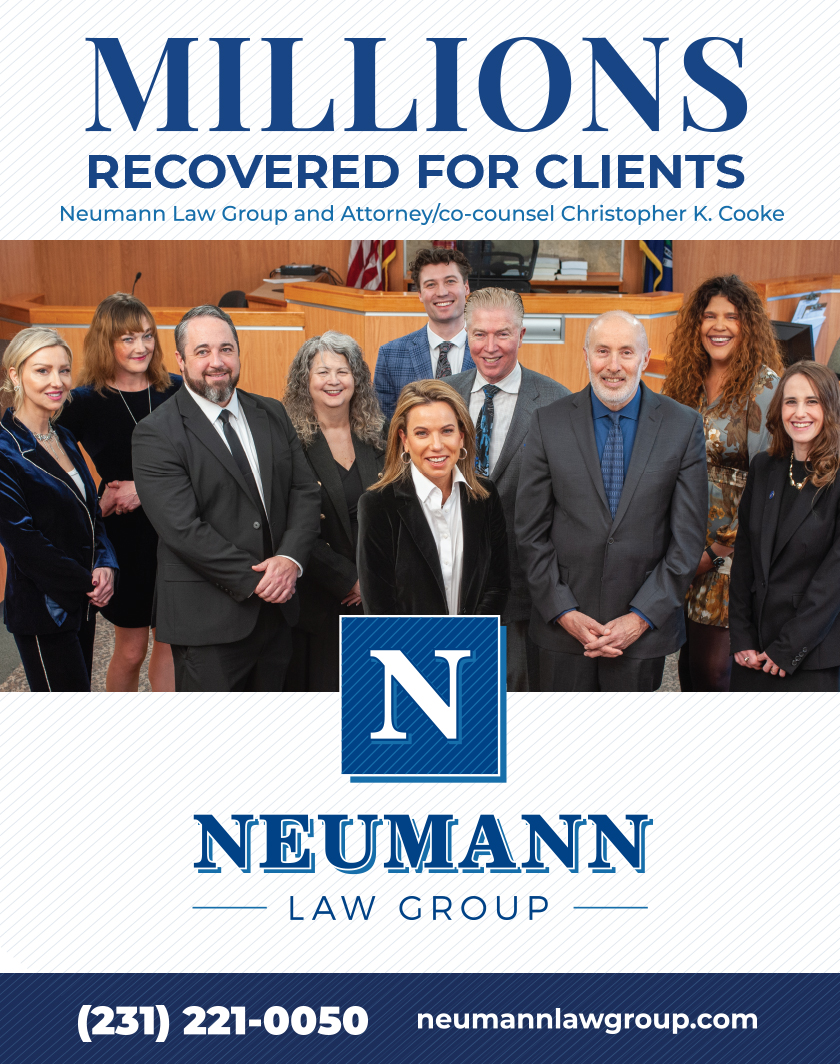Protecting Wild Horses
Guest Opinion
By Patricia Thomas | June 7, 2025
You and your family are walking downtown Traverse City on a beautiful summer day. As you are walking toward an ice cream shop, you look behind you because there is a helicopter coming very close. This helicopter is hardly flying above the car tops; you can feel the whirling of the blades. You have no time to think—everyone grabs their families and starts running as fast they can.
The helicopter steers everyone from downtown all the way to Thirlby Field, where an open gate awaits. As everyone is running and screaming, children start falling from exhaustion, and chaos is everywhere. There is someone at the entrance gate to the stadium welcoming you. Once inside, everyone is separated hastily by sex and age.
Then the gate is slammed shut with a thunderous sound. A voice on a loud-speaker states, “Welcome, you are here for three years; food and water will be supplied as necessary.” The helicopter swings out of sight, along with your freedom.
Everyone is looking at the fencing to climb out, but it’s so high no one can climb it, nor can they see through or over it. There is no ceiling nor cover from the sun and the elements.
The hearts of everyone are about to jump out of their chests from despair, panic, and fear. Cries and screams are overwhelming. Everyone’s heart is beating so fast and hard, some are passing out. People are left to perish.
Unimaginable and horrific, right?
This is what our iconic native wild horses and burros go through year after year by the thousands as they are taken from their homes on public land during the Bureau of Land Management (BLM) roundups.
The horses and burros are grazing on a beautiful morning, just like they have done their entire lives. Their ears perk up because suddenly they hear a strange humming from far away. This sound gets louder when suddenly it is upon them, the blades of this flying beast nearly touching them. The stallion immediately leads his family, including a couple of foals and burros, on a run for their lives, for miles at full speed in the hot, dry climate, with dust flying so thick they can hardly see.
Suddenly they see a horse and they head for one of their kind. It is a bait horse that leads the horses and burros into fencing so high they cannot see out, where are separated by sex. The foals, those that made it, are lassoed by their neck from their parents into a separate pen. They squeal from the tightness of lasso.
The horses and burros are now stacked in already-packed fencing or semis that take them to another already packed area. The semis have no protective guards for the crowded animals that are flailing and falling from the rough terrain they are being driven over. The semis are completely dark inside, something these animals have never experienced, adding to their fight for their life an environment that hurls them into terror and fear.
The horses and burros will never have their freedom as they knew that morning.
Horses and burros have done so much for us, and we have a responsibility to do what’s right for them. How can we let this happen year after year? They were our first means of transportation, fought in many wars, and continuously entertain us with their beauty and strength.
This July 2025, the BLM is planning on clearing 2.5 million acres of horses and burros. This is gut-wrenching. This is not management but a devasted system with the lives of America’s horses and burros being oppressed and mistreated. They have no place for these animals—the others they have captured are left standing in fencing for the rest of their lives, abused, adopted out, or transported for slaughter.
I just had the privilege of witnessing 194 stunning and magnificent wild horses free on 32,000 acres at the Wild Horse Refuge in Craig, Colorado. Most of these horses were adopted after capture from the BLM.
I asked our tour guide, Erin Stadelman, Wild Horse Ranch Manager, what is the plight of the wild horse, and she responded, “Reduction of acreage allotted for adopted horses from the BLM is a critical challenge.”
A day later while touring the Wild Animal Sanctuary in Keenesburg, I spoke with Pat Craig, founder and executive director of both the sanctuary and refuge. We shared our mutual distress over the eradication of 10,000+ native wild horses and burros from the Wyoming landscape this summer.
According to a press release from The American Wild Horse Conservation, the 2026 Congressional budget was released with the longstanding ban on wild horse slaughter omitted. The omission removes protections from cross-border slaughter, allowing the BLM to give wild horses and burros away at no cost and initiating transfers to pass horses to private entities with no federal oversight or restrictions on their fate. The ban on slaughter plant inspections shuttered in this country only strengthens the concern that horses and burros would be transferred to kill buyers for export across our borders.
Together, we must command protection from the mishandling and mismanagement of our iconic mustangs and burros. Please contact The American Wild Horse Conservation and/or the Wild Horse Refuge in Craig, Colorado, and share your support of these magnificent wild animals.
Patricia Thomas is a member of the Wild Animal Sanctuary & Wild Horse Refuge and a Volunteer Ambassador for the American Wild Horse Conservation. She is an avid admirer and advocate for horses, burros, and ALL other animals given to us by mother earth.
Trending

A Botanic, Poetic Belle
Emily Dickinson, the American poet who gave us poems like “‘Hope’ is the thing with feathers” and &l… Read More >>
Wine + Food = Leland
It’s baaccckkkk… The 37th Leland Wine and Food Festival will take place at its original home, Leland Harbor, Sa… Read More >>
Mac & Cheese Festival Heads to Turtle Creek Stadium
You say mac, we say cheese! Turtle Creek Stadium is switching gears from baseball and fireworks to carbs and dairy on June 1… Read More >>


